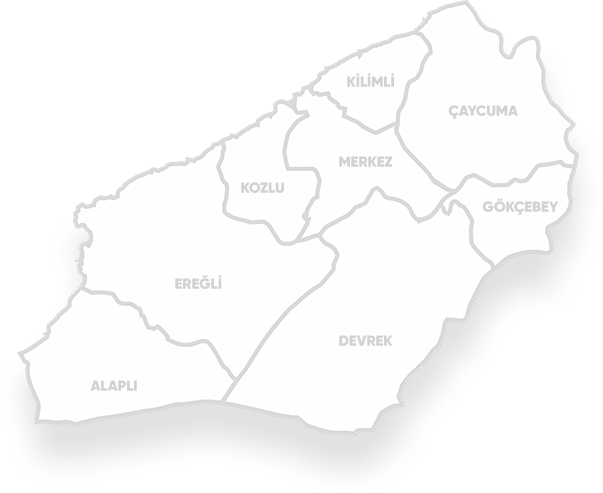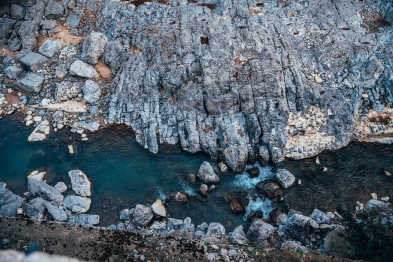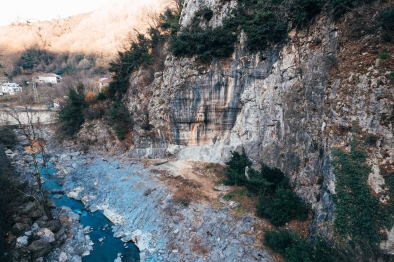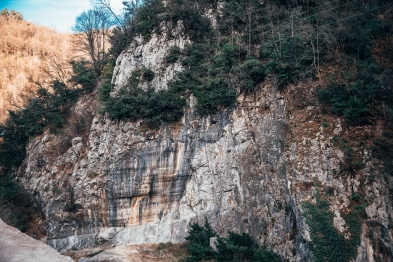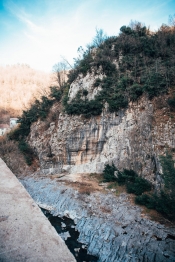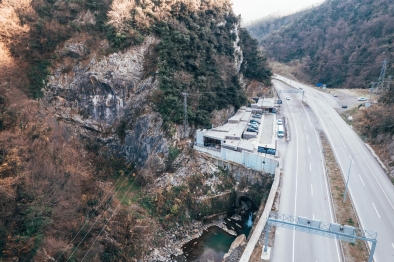
-
 About Us
About Us Detailed information about Zonguldak Coal Geopark and more...
About Us
About Us Detailed information about Zonguldak Coal Geopark and more... -
 Enjoy
Enjoy
-
 Discover
Discover Discover Zonguldak Geoparks
Discover
Discover Discover Zonguldak Geoparks -
 Learn
Learn
-
 Activities
Activities
-
 GeoNetwork
GeoNetwork
-
 Contact Us
Contact Us


Gökgöl Devonian-Carboniferous Boundary Sequence
G-49 The sequence covers the units exposed along the road between Gökgöl cave and Gökgöl Tunnel. It includes stratified rocks deposited in the shallow parts of the ancient oceans known as the Reyik and Paleotethys, containing marine sediments extending from the Late Devonian to the Early Carboniferous (375 – 328 Ma). These oceans were located between large continental chunks converging in the geological past, namely Lavrussia (the old continent representing the combined state of Northern Europe, North America, Greenland, and Russia) and Gondwana (the old continent representing South America, Africa, the Arabian Peninsula). There were also various islands and small continents between the oceans. The Gökgöl cave and its surrounding succession belong to the units deposited in the oceans on the margins of these continents. Paleontological, sedimentological and geochemical findings related to the Devonian - Carboniferous boundary were encountered for the first time in Turkey in the Gökgöl succession. Various invertebrate fossils representing different geological ages (such as rugosa corals, goniatites, foraminifers) were found in samples taken from limestone, dolomitic limestone and thinly bedded black shales of units corresponding to the upper levels of the Yılanlı formation. When the layers were examined in temporal order, it was determined that the organisms had largely disappeared in some periods. These periods are known as the 'Hangenberg' that took place at the end of the Devonian and the 'Alumn shale' mass extinctions that took place in the Carboniferous and correspond to the global climate change crises.
During the Hangenberg Mass Extinction Event, more than 45% of marine species went extinct. This biotic event, the cause of which is still controversial, is one of the 5 largest mass extinctions that have occurred throughout all geological times. The existence of Alumn Shale Mass Extinction event has been demonstrated by geochemical findings such as major/trace element and stable isotope. Units representing this period can also be found in Gökgöl Cave. Black colored corals and shales in the cave indicate a period of extinction. Black cherty waters with chemical events have melted the corals, leaving traces of 'ghost corals' in places. As a result of the mass extinction event, the ancestral species of corals, the goniatites, the ancestors of the ammonites, and the makri and micro living groups disappeared.
The fact that the geological traces of all these events can be followed uninterruptedly and that it covers the Devonian/Carboniferous transition shows that the Gökgöl succession is a unit of scientific importance for border surveys. Considering the data potential, the sequence can be accepted as a type section on an international scale.
